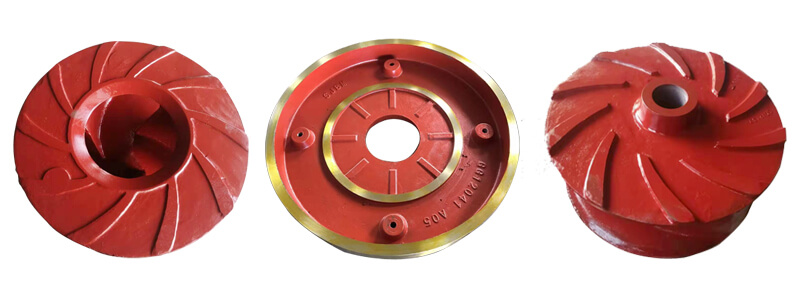What is a centrifugal pump?
Know the basis of Pumps
A centrifugal pump is a mechanical device, which is designed to move a fluid by means of the transfer of rotational energy from one or more driven rotors, called impellers.
But before knowing deeper of the centrifugal pump one must have a brief knowledge about pumps. Pumps are deployed to create a heavy discharge pressure to pump the liquid from one location to other. The location from where water is sucked or negative pressure is generated, around sump.
Hence Cent pumps are one of the type where centrifugal force is the key in pumping phenomenon. Impellers and casing are the prime necessities for cent pumps as impellers induce kinetic energy to liquid while casing converts this kinetic energy into pressure energy.
And centrifugal pump is using the principle of the centrifugal force when a wheel or tire is spinning fast, anything is attached to the wheel will be thrown outwardly. air or water will be forced to leave the edge of the wheel or tire. A centrifugal pump has a turbine built inside a casing with the center opening, this the intake of water, when the turbine spins fast, water will be sucked in the center hole and will be thrown out of the edge of the blades to the output hole.
Like most pumps, a centrifugal pump converts rotational energy, often from a motor, to energy in a moving fluid. A portion of the energy goes into kinetic energy of the fluid. Fluid enters axially through eye of the casing, is caught up in the impeller blades, and is whirled tangentially and radially outward until it leaves through all circumferential parts of the impeller into the diffuser part of the casing. The fluid gains both velocity and pressure while passing through the impeller. The doughnut-shaped diffuser, or scroll, section of the casing decelerates the flow and further increases the pressure.
Fluid enters the rapidly rotating impeller along its axis and is cast out by centrifugal force along its circumference through the impeller’s vane tips. The action of the impeller increases the fluid’s velocity and pressure and also directs it towards the pump outlet.
What are inside the centrifugal pump ?

The impeller of centrifugal pump
Centrifugal pump is composed of six parts are the impeller, pump, pump shaft, bearing, seal ring, stuffing box.
- The impeller is the core part of the centrifugal pump, it is high speed, the impeller on the leaves and play a major role, the impeller in the assembly before the static balance through the experiment. The inner and outer surfaces of the impeller require smoothness to reduce the friction loss of the water flow.
- The pump also known as pump shell, it is the main pump. To support the fixed role, and with the installation of the bearing, bracket connected.
- The role of the pump shaft is connected by the coupling and the motor, the motor torque to the impeller, so it is the main component of the transmission of mechanical energy.
- Sliding bearings using a transparent oil as a lubricant, refuelling to the oil level line. Too much oil to seepage along the pump shaft, too little bearing and overheating caused by the accident! In the process of running the pump bearing the maximum temperature of 85 degrees, the general operation of about 60 degrees.
- Seal ring, also known as leakage ring.
- Packing material mainly by the filler, water ring, packing tube, packing gland, water seal tube composition. The function of the stuffing box is mainly to close the gap between the pump casing and the pump shaft so that the water flow inside the pump does not allow the outside air to enter the pump. Always keep the vacuum inside the pump! When the pump shaft and filler friction heat is necessary to rely on the water seal tube to the water seal to fill the filler! Maintain the normal operation of the pump. So in the operation of the pump during the tour inspection of the stuffing box is to pay special attention! It takes about 600 hours to replace the packing.
Centrifugal Pump’s success usages in some industry area
Water desalination plants
UN predicts that 14% of the global population will be suffering from water scarcity by 2025. This is bound to make water desalination plants a vital process. This process involves separating dissolved salts and other minerals from otherwise unusable water. Through this process, potable water can be transferred to areas that need it most. And, although desalination methods vary dramatically (from nanofiltration to electrodialysis), what unites these processes is the usage of centrifugal pumps. More than capable of transporting solid-containing seawater efficiently, self-priming centrifugal pumps are especially popular with high capacity water desalination plants.
Mining industry
The mining industry is unconventional in that it uses centrifugal pumps in an altogether different manner to similar industries. In the context of mining, despite being the same mechanism structurally, a centrifugal pump is known as a froth pump, because of the product it is altered to produce. Mineral processing owes the separation of precious minerals from gangue and bitumen to the intervention of centrifugal pumps. As well as actually playing a part in processing the minerals themselves, centrifugal pumps are also used to transport the slurries and solid-containing fluids that accumulate during the mining process.
Petrochemical plants
The petrochemical industry is worth well over $500 billion, and it relies heavily on centrifugal pumps. Given not only the value of the petrochemical components in use but also the very real danger of them igniting means that the robustness of the centrifugal pumps involved is of extreme importance. Consequently, the production of plastics, rubbers, and dyes is also done through well-designed centrifugal pumps.
What is significant is that operations at all these industries are heavily dependent on Centrifugal Pumps. Thus Pump efficiency, monitoring and arising costs are of extreme importance to these industries. Pump downtime can put operations at a complete halt leading to revenue loss. Further damage repair or Pump replacement is also very expensive. To mitigate such losses pump users want to avoid damages to the pumping equipment. See more cases of Centrifugal Pump at here: WALKER customers cases
